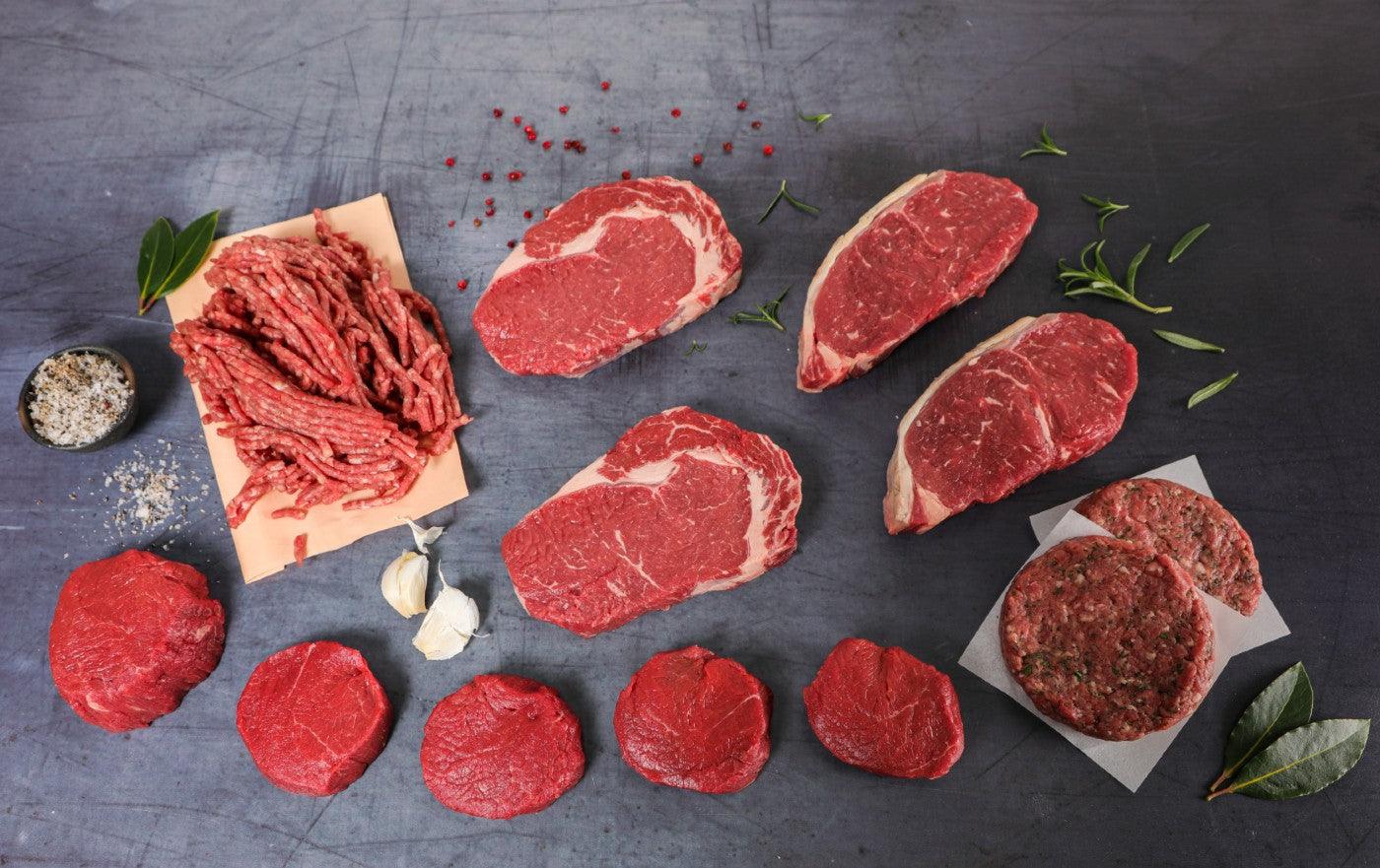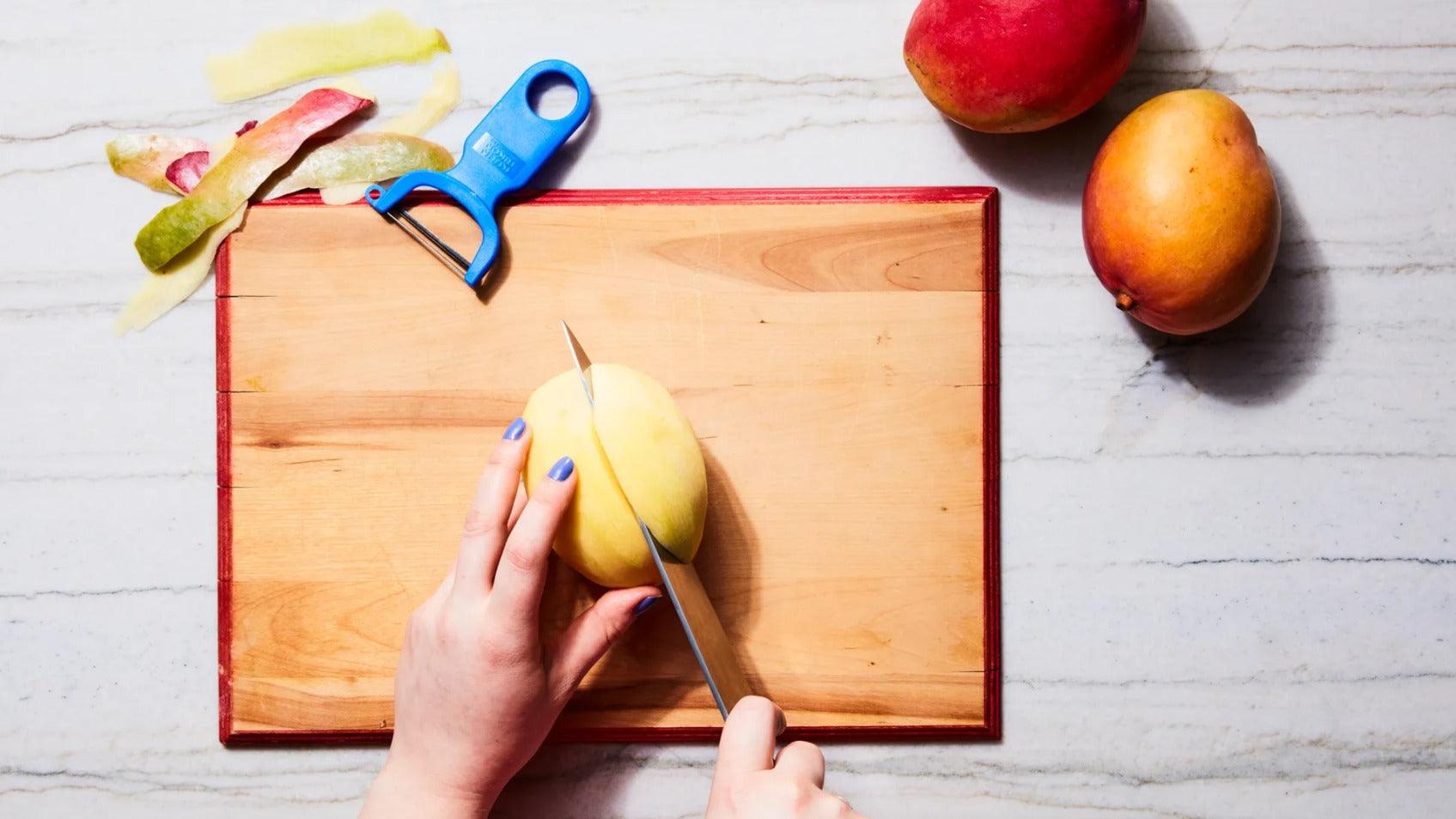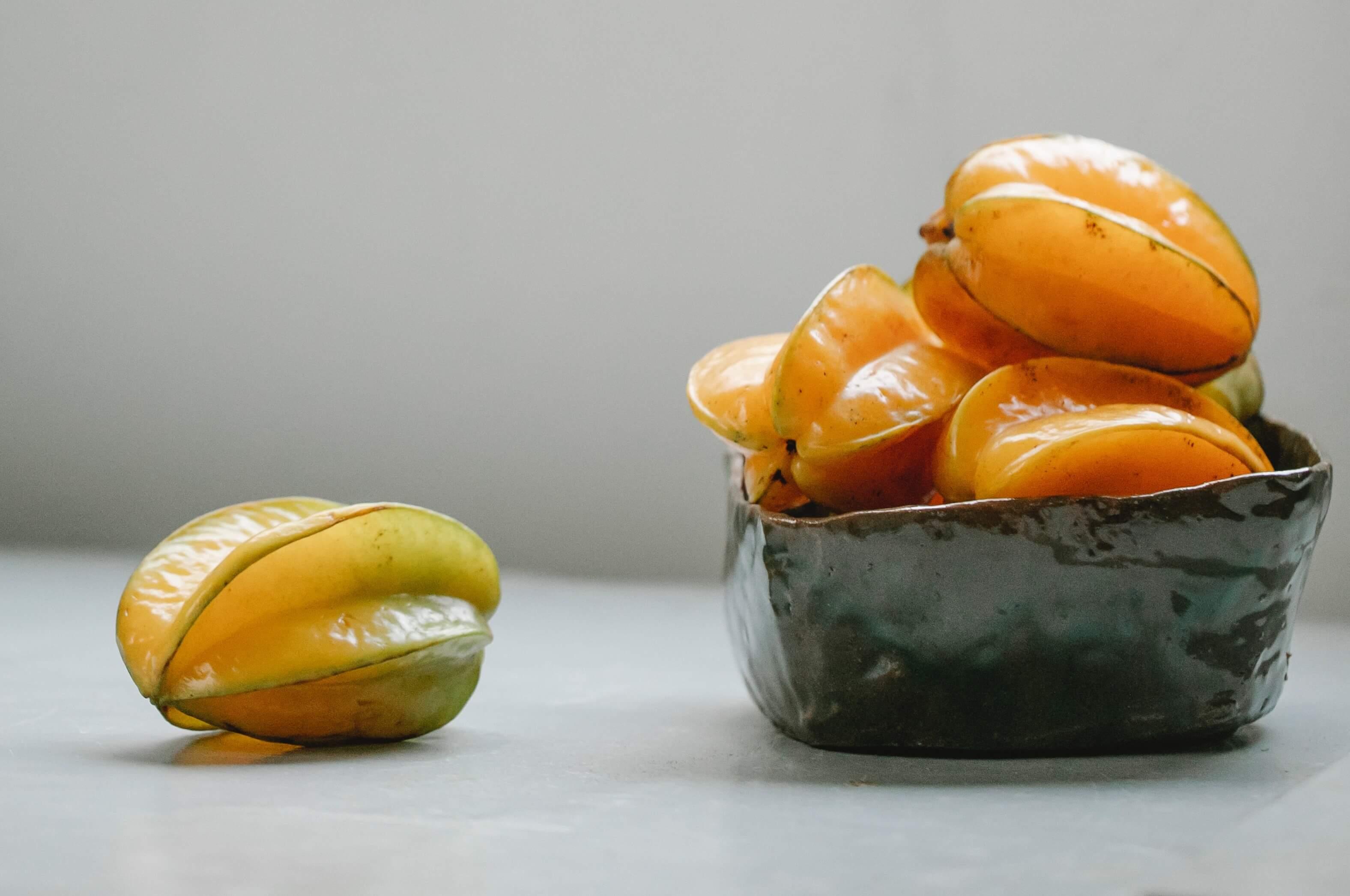TABLE OF CONTENTS

When shopping for beef, you'll notice that there are different names for the type of beef you purchase. These are known as the cuts of beef. They refer to the location of the meat. Beef is divided into large sections which are known as primal cuts. If you looked at a picture of a steer, you would see that the brisket comes from the front part of the steer while the round comes back from backside.
These primal beef cuts are also further categorized into subprimals or food service cuts. People choose the beef that they purchase based on various factors, but tenderness is usually a prime consideration. The most tender cuts of beef are the rib and tenderloin which are the farthest from the horn and hoof. In contrast, the toughest cuts of meat come from the shoulder and leg areas since these are worked the most.
If shopping for beef, you may want to take a look at where the meat comes from to decide on the optimal cooking method. Tender cuts of beef can usually be cooked quickly while tougher types of meat usually require stewing or a longer cooking process to make them edible.
10 Types of Beef Cuts Explained
The different types of beef can be challenging, but this overview of 10 types can help you to understand the beef you're purchasing.
1.Chuck
The chuck meat comes from the shoulder region. This is a tougher cut of beef because cows use their shoulder a lot. It's also very flavorful though which is why butchers cut it in a variety of ways so that you'll have more options at the grocery store. The types of cuts that you'll see may include ground chuck or hamburger, flat-iron steak, chuck pot roast, and top blade steak although there are also many others. While you may have to cook chuck slower to break down the collagen, this is a good option for both flavor and cost.
2.Brisket
The brisket is found near the breast or lower chest area in the steer. This is a lower fat content as it is one of the most used muscles. If not cooked carefully, brisket can be tough and difficult to taste. However, when marinated and cooked slowly, brisket can end up being a great piece of meat. Make sure when cooking brisket to slice against the grain of the beef cut. This will ensure that the cooked meat ends up being tender and easy for anyone to enjoy. Most people use brisket for barbecue, corned beef, or pastrami. Read more: How to slice a smoked brisket?
3.Rib
The ribs are made up of the steer's ribs and backbone. While there are 13 pairs of ribs, only the last section are in the prime section. The others are in the chuck cut. Ribs are some of the best parts of the meat since they have a lot of flavor and fat marbling. The types of cuts that you'll see for ribs include Delmonico steak, ribeye roast, beef short ribs, and ribeye steaks. This cut of meat is commonly grilled, roasted, and seared for maximal flavor. It's not recommended for slow cooking though as it is naturally a more tender cut.
4.Plate
The plate cut is found near the stomach or the abdomen area of the steer. It's a rather tough cut of meat but is actually higher in fat than other areas. The common types of cuts from this area include skirt steak, hanger steak, beef bacon, and ground beef. You can make a variety of dishes with these cuts although fajitas, pastrami, and skirt steak are popular. This cut of beef may also be cured and then thinly sliced in order to make beef bacon.
5.Short Loin
The loin of the steer is where the most expensive cuts come from. It's located at the top of the steer behind the rib. Since this is not a heavily used muscle, it's very tender. The loin has two parts: short loin and sirloin. The popular cuts from the short loin include t-bone, strip steak, and others. These cuts of beef are some of the most expensive ones in the steer and also some of the most flavorful.
6.Flank
The flank is located below the loin. This is a cut of beef that does not have any bones but it's flavorful on its own. This is a tough cut of beef, be careful as overcooking can cause it to turn even tougher. The two most common cuts from the flank include the flank steak and London broil. The best way to cook it is by grilling it quickly at a high temperature. Marinating the meat ahead of time will prevent it from over-drying. It's also good when braised and can be used for ground beef.
7.Sirloin
The sirloin also comes from the loin and is one of the more expensive cuts of beef. The sirloin area is slightly less tender than the short loin but it's also more flavorful. The cuts from the sirloin area include center cut sirloin, top sirloin, and sirloin steak as well as others. This cut is often prepared at steakhouses and can be slightly less expensive than short loin.
8.Tenderloin
The tenderloin is actually the most tender cut of beef. It's also found within the loin. The tenderloin extends from the short loin into the sirloin. To get the maximum flavor from this cut, beef tenderloin should only be cooked using dry heat methods such as broiling and grilling. The meat is naturally very tender so long cooking times are not necessary.
9.Round
The round is the back leg of the steer. Muscles from this area are fairly lean so this is a tougher cut of meat. It's best to cut this steak against the grain in order to break down the muscle fibers. Types of round cuts can include top round, bottom round, and the knuckle. The bottom round is where you'll get rump roast and eye of round. Since this cut doesn't contain as much collagen, it won't typically end up being tender even when cooked slowly. Most butchers recommend slow roasting and the round can be sliced thinly for sandwiches.
10.Shank
As its name suggests, the beef shank is the leg of the animal's thigh. Each side of beef has two shanks. This is one of the toughest pieces of meat since it's full of connective tissue. With a high collagen content, beef shank is best when cooked with moist heat slowly over time. It's used to make the luxurious Italian dish osso buco but can be used in a variety of other dishes as well. Slow cooking will give the best results though.

Best Butcher Knives for Different Types of Beef Cuts
When cutting different types of beef, you want to ensure that you have the right tools for the job. These are a few different types of meat and what they're best suited for when it comes to meat.

Butcher's Breaking Cimitar Knife 10" | imarku
This knife appropriately gets its name from a scimitar and with good reason. The long-bladed professional breaking knife is a powerhouse in nose to tail sectioning and portioning. It will allow you to glide through steak like butter, trim briskets, and break down larger pieces as needed. The curved blade creates leverage and can complete cuts without sawing. It's typically used for cutting up larger pieces of meet, shaving met, or removing fat from the edges. With its delicate tips, this is a tool that can be used for both larger cutting as well as more delicate work.

Butcher Knife, Serbian Chef's Knife 6.7" | imarku
This is a multifunctional chef butcher knife designed for chefs, culinary experts, and even ordinary people. It's a versatile knife that's ideal for various tasks. This sharp and sturdy butcher knife can easily cut thick meat and various bones without too much effort. The small size of the blade makes it versatile. It's best to slice through thicker beef cuts such as roasts and other compact dishes. It easily cuts through the meat without needing additional effort.
Choosing a Beef Cut
When you want to cook a piece of beef, it's best to start with the type of cooking you want to do and then let that guide your choice. If you have time, visit a local butcher shop and ask the butcher about their favorite preparation methods and cooking tips. This overview will give you an idea of what to expect from each cut. You may be interested in these beef recipes:
Best Grilled Steak and Vegetables Recipe
Beef Stir Fry With Noodles Recipe
Make sure that when you're working with beef, you have the right tools at your disposal. Having an arsenal of good chef knives handy will make prep work easy. Once you have an idea of what you want to make, don't be afraid to experiment with some of these cuts of beef. You may be surprised to find a new one that you haven't tried before becoming a favorite in the kitchen.























Leave a comment
All comments are moderated before being published.
This site is protected by hCaptcha and the hCaptcha Privacy Policy and Terms of Service apply.